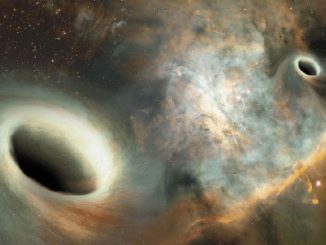
Our knowledge of the universe has expanded over time but large aspects of it continue to be a mystery. For instance, in an attempt to illustrate the cosmos, scientists introduced the concepts of dark matter and dark energy though both are not fully understood. In fact, based on scientific calculations, dark matter and dark energy constitute a large majority of our universe — 23.3% is occupied by dark matter and 72.1% by dark energy.
Still, dark matter and dark energy remain to be hypothetical concepts. They aren’t (and have not been) measured directly by any instruments and their presence are only speculated based on theories and simulations. Normal matter – the one we always defined as “anything that occupies space and has mass” – is what we have grasped in real life and yet, according to calculations, it only occupies a measly 4.6%. Normal matter constitutes the luminous parts of the universe, which include the stars, gases and dusts.
However, one thing that puzzles scientists is that the quantity of normal matter they have been able to detect does not concur with their models of the universe. Due to this, it has been difficult synchronizing their theoretical calculations with some real physical data. While there are clues as to where this unaccounted matter has been hiding, researchers recently discovered that the missing matter is located in areas between galaxies.
This missing matter is made of subatomic particles called ‘baryons’ and they link galaxies together through filaments of hot gases. However, these gases are quite thin and not hot enough to be detected by X-ray telescopes. This is the reason their existence are privy to scientists. Additionally, there are no instruments yet to measure these gases, which is another aspect that just like dark matter and dark energy, makes their existence hypothetical in nature.
If that’s the case, then the logical question would be: how did researchers found this missing matter? Two separate scientist teams, one from France’s Space Astrophysics led by Hideki Tanimura and the other from UK’s University of Edinburgh led by Anna de Graaff, took advantage of a phenomenon called the Sunyaev-Zel’dovich effect. When residual light from the big bang passes through a hot gas, some will scatter off the electrons in the gas and leave a dim patch in the cosmic background.
To detect these faint filaments, Tanimura’s team stacked data of 260,000 pairs of galaxies which they believe are connected by baryon strands. Graaff’s team, on the other hand, used over a million pairs (the data were previously collected in 2015 with a so-called “Planck satellite”). Despite their thinness, these gases had enough density to form the filaments between galaxies and consequently allow both teams to detect them. As the missing matter was fully accounted through the existence of baryon strands which, as mentioned, link galaxies together through filaments of hot gases, scientists were finally able to validate simulated models of the universe with some actual data.
“Everybody sort of knows that it has to be there, but this is the first time that somebody—two different groups, no less—has come up with a definitive detection,” said Ralph Kraft of the Harvard-Smithsonian Center for Astrophysics, who was not part of the research conducted by both teams. “This goes a long way toward showing that many of our ideas of how galaxies form and how structures form over the history of the universe are pretty much correct.”
Reference: New Scientist
- Bulenox: Get 45% to 91% OFF ... Use Discount Code: UNO
- Risk Our Money Not Yours | Get 50% to 90% OFF ... Use Discount Code: MMBVBKSM
Disclaimer: This page contains affiliate links. If you choose to make a purchase after clicking a link, we may receive a commission at no additional cost to you. Thank you for your support!




Leave a Reply